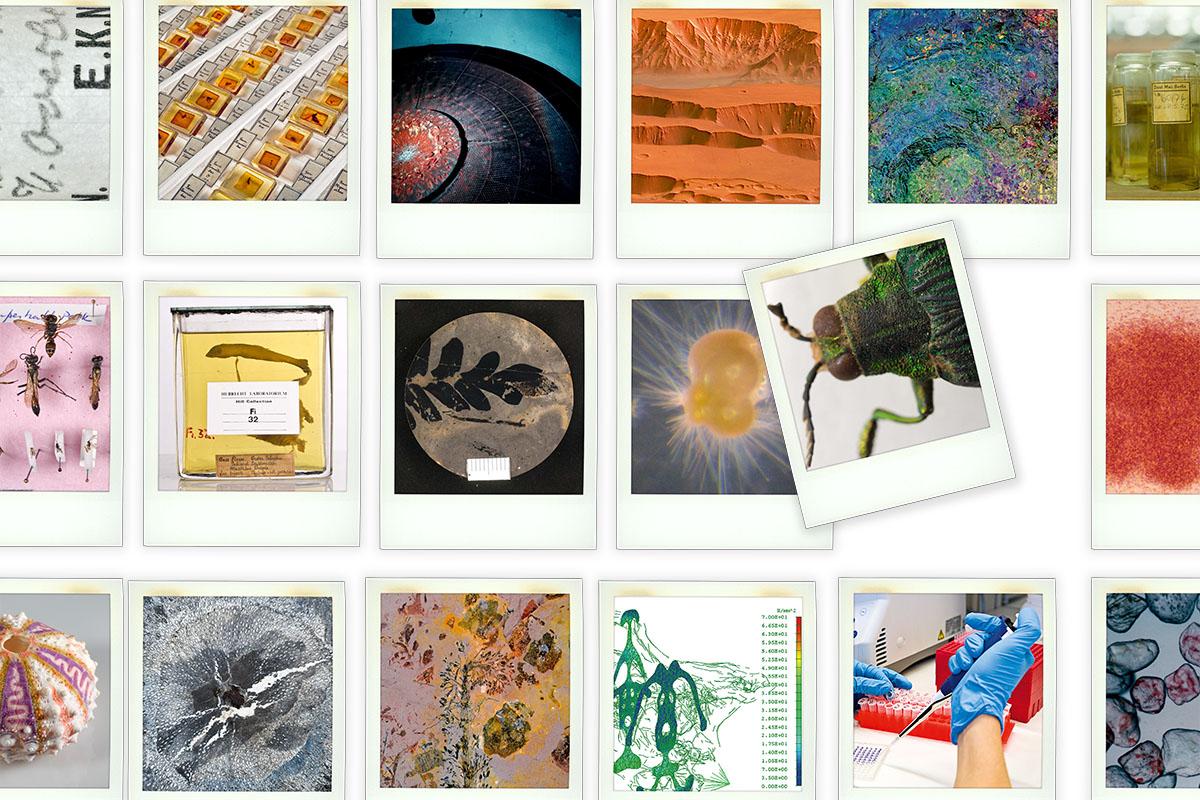New Processing and Knowledge Communication Approaches for Research Museums – Subproject Nature
Generally, only small parts of natural history collections are open to the public. Digitisation can provide access points, but the transfer from the collection to the computer is only the first step.
A spider specimen slumbers in a collection for decades, a bird's voice is preserved on tape, famous collectors look into the camera on old black-and-white photographs: A large part of these analog treasures is usually only accessible to scientists. However, the possibilities of digitisation open many doors. Museums have been producing a wide and growing variety of digital content for years. Sounds, images, texts or entire objects are thus preserved and can be accessed by the international research community from anywhere in the world.
Recommendations for action and format ideas
Digital content lends itself to a variety of uses beyond the scientific and museum purposes. Keyword: knowledge transfer. But this diversity of uses raises numerous questions that the NAVI project team, consisting of scientists from the Museum für Naturkunde and the Deutsches Schifffahrtsmuseum, is addressing. The intent to make museum content accessible to a broad public that does not have to come to the museum is pivotal.
The first step is to take stock: what content is available at the museum and for what purpose was it originally created? Who, beyond the research community, could be interested in it and perhaps doesn't even know it yet? What ideas do the museum staff have for presenting or developing new products? And: Should we make everything available free of charge or should we also rely on license revenues? What legal framework applies?
A museum is confronted with these questions and the resulting barriers when it comes to the re-use of its digital content. In the NAVI project, the scientists therefore take different perspectives. They interview representatives of other museums about how they deal with digital content and develop methods, processes, recommendations for action and format ideas.
And in the end? A spider scanned by laser using micro-computer tomography becomes a three-dimensional motif of a glass cube, the bird recording becomes part of an app for determining native species (http://ikon.code.naturkundemuseum.berlin/wiki/110045) and portrait photos illustrate a newspaper article about 19th century insect collectors. Digital knowledge becomes tangible again - and finds its way out of the museum and into society.
Partner
The NAVI project was carried out in cooperation with the German Maritime Museum (Deutsches Schifffahrtsmuseum).
Funding
The project was funded by the Federal Ministry of Education and Research (BMBF) within the scope of "Innovationsorientierung der Forschung" (Innovation Orientation of Research).
